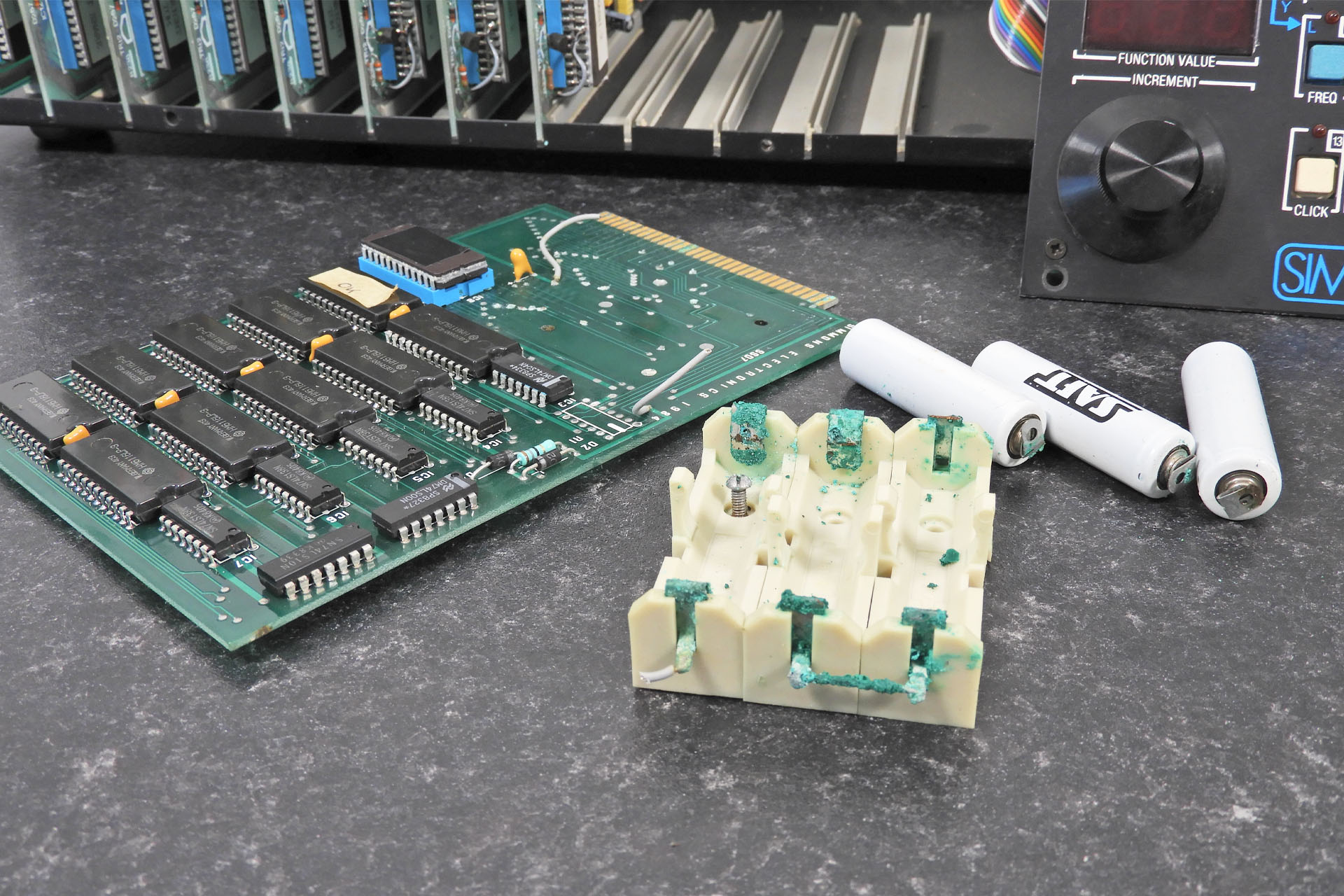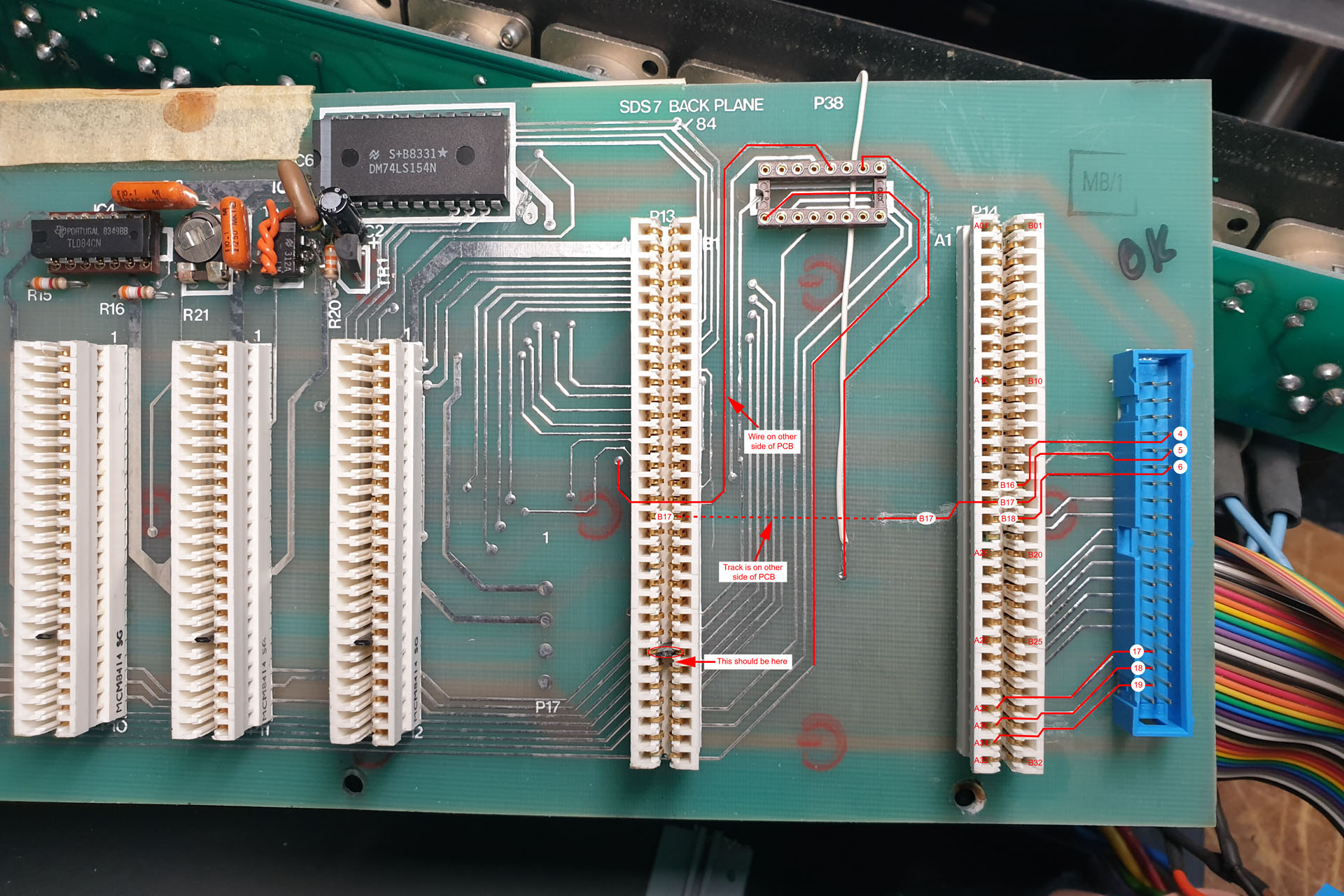This Simmons SDS7 battery leak occurred because the battery wasn’t charged regularly.
Recently in, was a Simmons SDS7.This is my second most favourite electronic drum systems of all time, after the Simmons SDX. In fact, you can read how much I love this instrument here.
Anyway, this SDS7 was apparently just fine a couple of years ago but when the owner recently got it out of storage, there was no sound. Powering up but otherwise completely dead, only the voice-card name illumination seemed to be coming on with nothing showing in the programmer display. Well, I had a pretty good idea what was wrong with it.
Like a lot of music technology at the time, the pre-MIDI Simmons SDS7 used NiCd (nickel-cadmium) batteries to back up its memory. Some manufacturers like Cheetah, continued to use NiCads all the way up to the end of the eighties, perhaps even a little later. Unlike lithium batteries which soon took over, NiCads need to be regularly charged. If left uncharged for an extended period, NiCd batteries die and WILL LEAK.
Fortunately, the Simmons SDS7 was built with vertically mounted PCBs. Despite the fact however, that there was also a version (like this one) which, instead of having a single battery soldered directly to the memory-board, used a triple AA battery holder (3 x 1.2V in series = 3.6V), battery acid managed to leak out over those already old solder joints, tracks and components. I soon noticed for example, that the C̅E̅ line was down and in fact there were several other issues preventing code from running and therefore not allowing the machine to boot.
There was also, a fair bit of damage to tracks on the rear buss-board (marked up as 'SDS7 BACK PLANE'), which couldn't be resolved by cleaning alone and which required some hot-wiring. Annoying but to be expected.
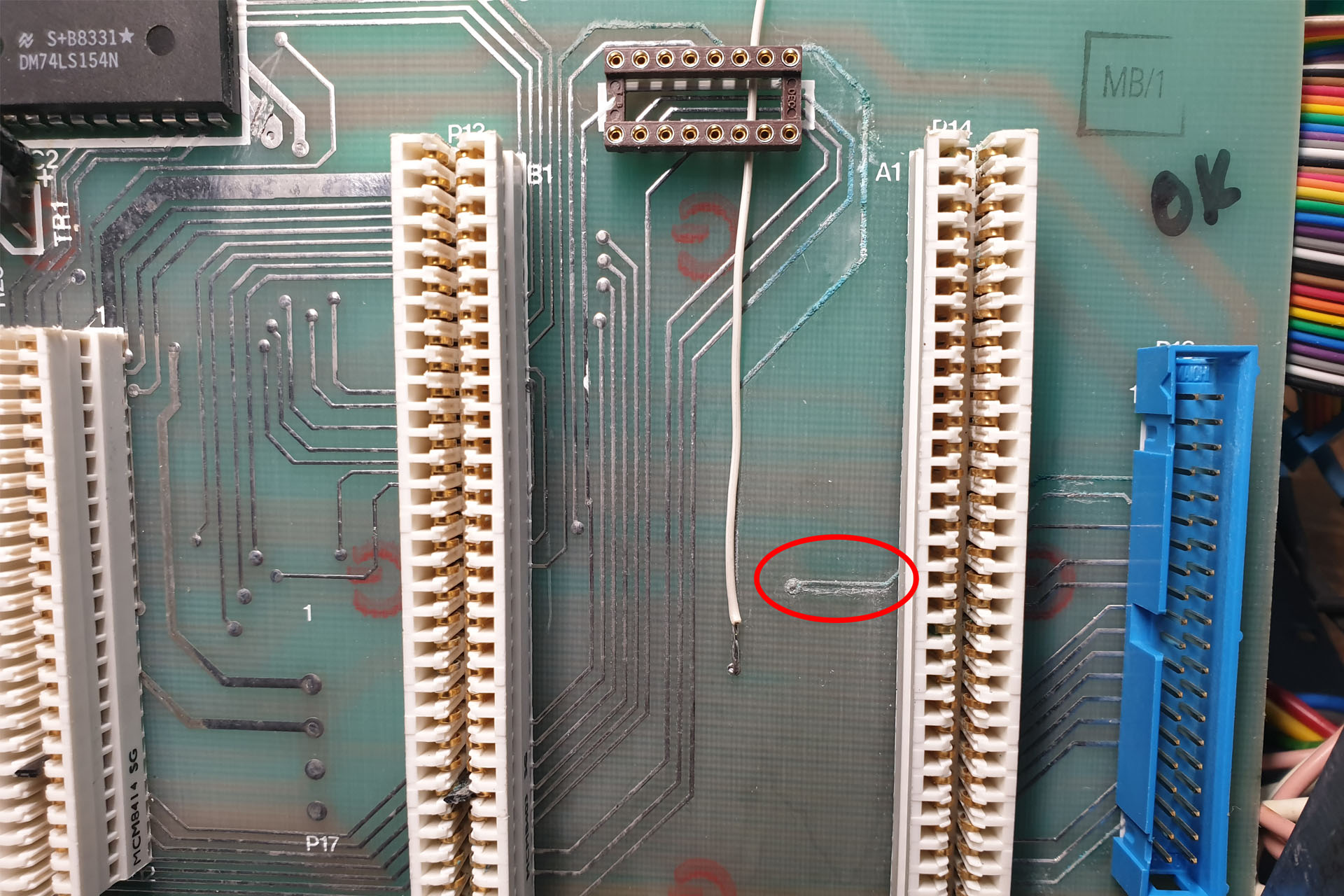
Above you can see that I'd already jumped one track but there were another eight which although buzzed out okay, I really didn't like the look of. One in particular looked as though it had completely succumbed to battery acid.
Technical literature on really old machines like the SDS7 is thin on the ground. Techs often have to make do with copies that were scanned many years ago on what would now be classed as, low-resolution scanners. I therefore, decided to make myself a little reference diagram.
Unlike the image above which is a standard 1920 x 1280, the original pdf document is pretty big but without going to that kind of trouble, I'd be shooting in the dark. In the end, I actually decided to install my wires around the back of the back plane PCB.
You'll notice in the two images above, that the polarising key in the CPU card edge connector (P13) is somewhere where it shouldn't be and that the key in the edge connector to the right (that takes the memory-board) is missing altogether. In fact, there was a polarising key on one of the voice-cards that was also out of place and so the card didn't work properly.
Anyway, while I was buzzing things out on the back plane, I carried on cleaned up the memory-board.
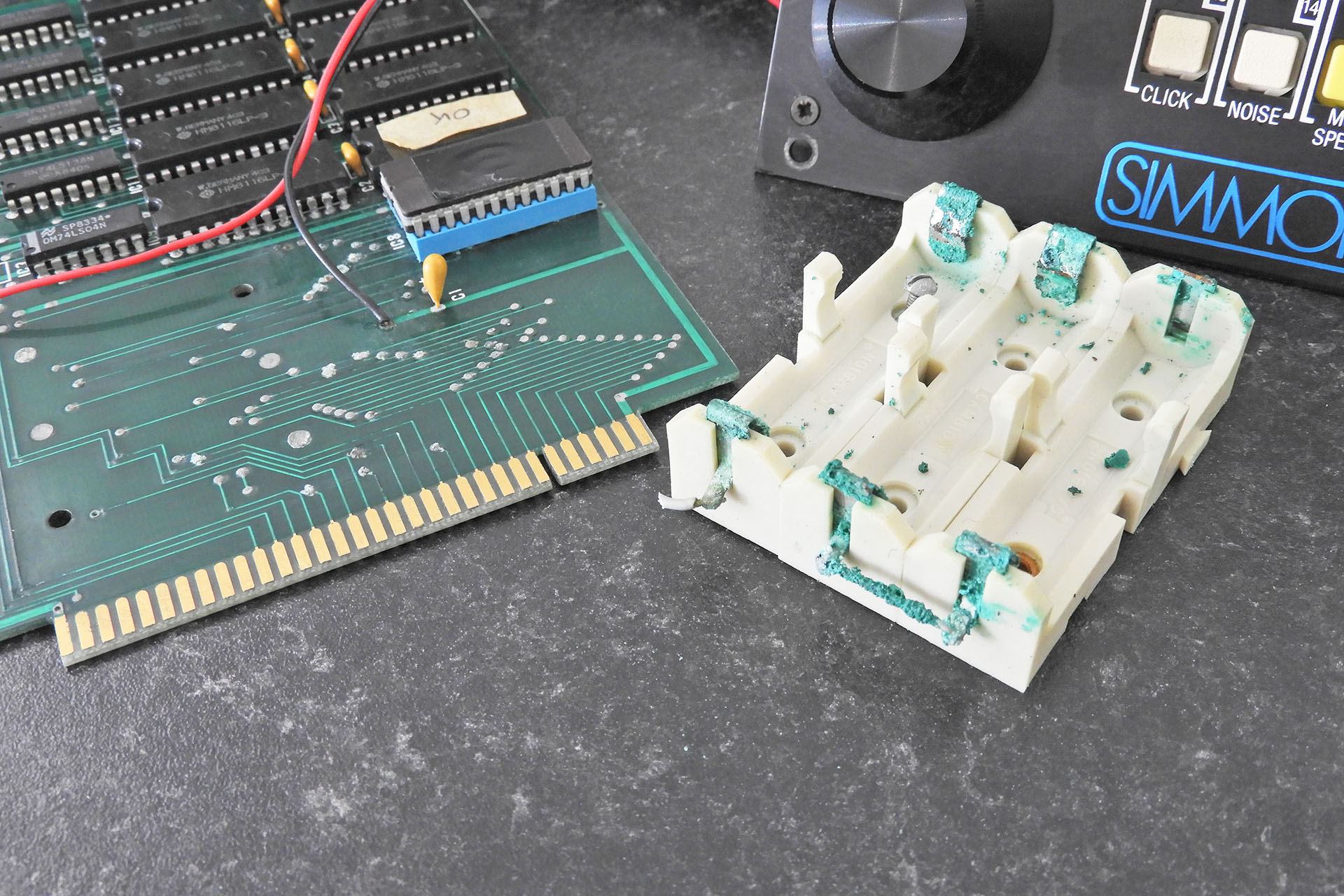
When I say "cleaning up the memory-board", it actually took several days to buzz out connections and hot-wire tracks that had been damaged by battery acid. After all that, this SDS7 finally managed to consistently boot but there was another problem; the data encoder was unresponsive. Grr... The problem turned out to be a simple but very annoying, dry joint under a buffer that reads the signal off one of the optical receivers. Phew...
My own SDS7 is serial number 71722. The serial number on the back of this one was #70320. If sequential, that's 1,402 units difference. More than just a batch or two!
Indeed, as I went over the insides of this SDS7, it became apparent that it was quite an early version. It had the optical encoder as opposed to the electrical contact type. The polarising keys in the edge connectors on the back plane were the small bits of black plastic type, instead of the yellow clip types used later. There were also various wire jumpers on the CPU-board that aren't on later revisions.
On a side note... There was also some work to do around the back of the unit as the socket pins although not corroded (because they can't), were very black and so needed a good clean.

The lid was smacked in at the front and was also badly scratched and lots of areas that showed corrosion.
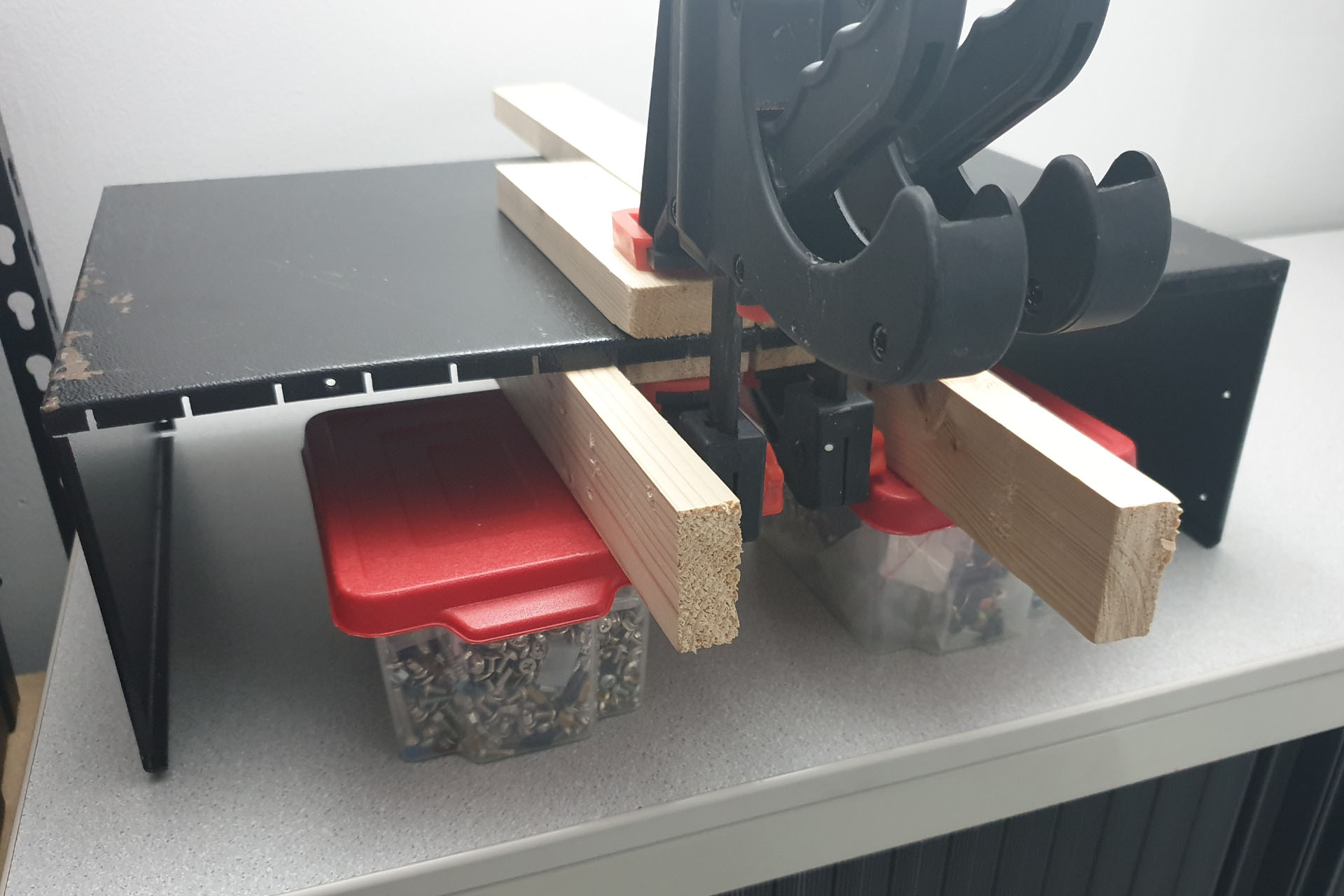
After several days (or perhaps two weeks) of patient straightening with a combination of heat, G-clamps and weights, I took it to a local company to be sand blasted and powder coated. They said that they didn't think they'd be able to match up the leatherette finish but when I collected the lid a week later, I was blown away. This top case looks like it just came from the factory! WOW!!!! 😮
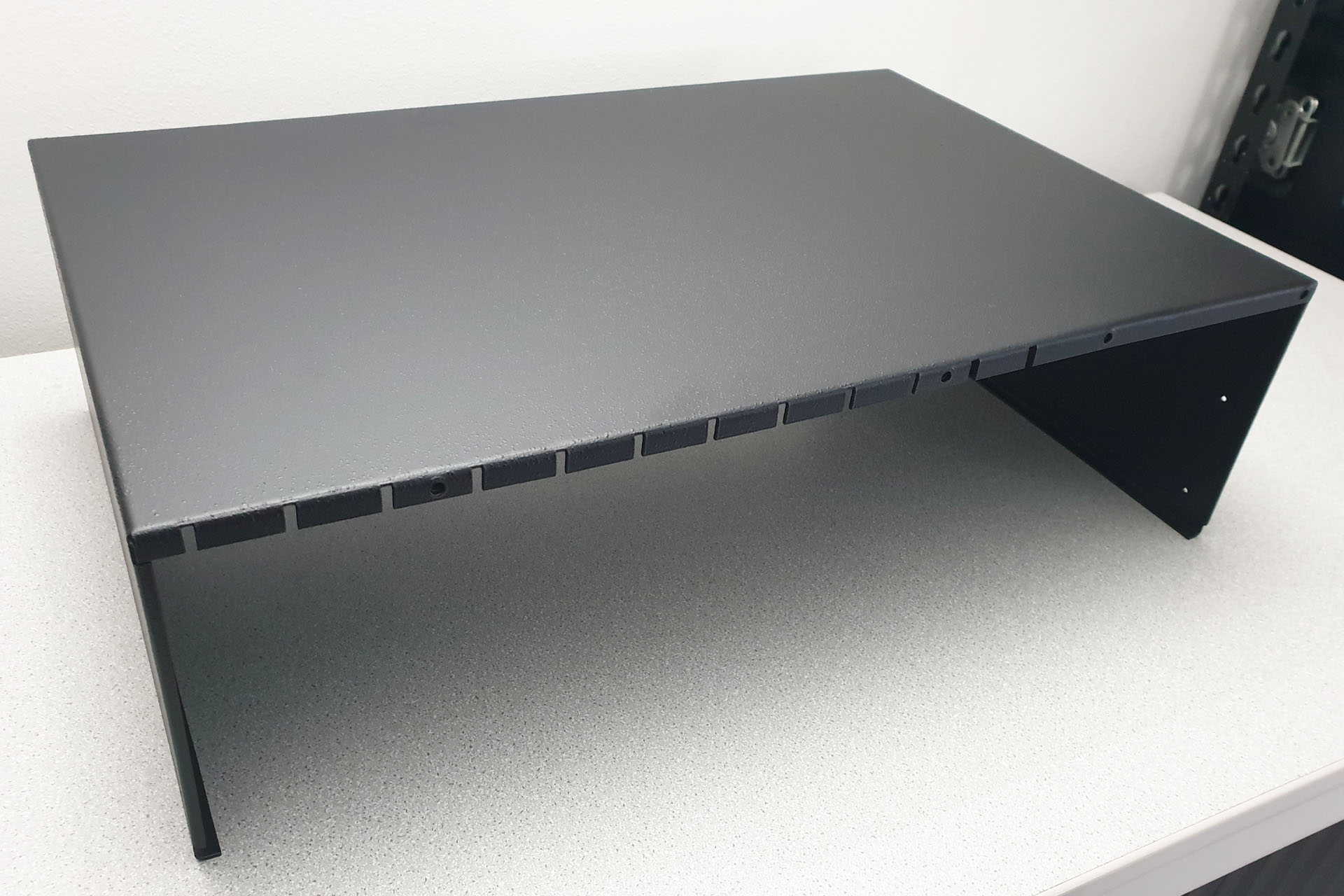
So, back to batteries... Amongst instruments like the afore mentioned Cheetah MS6 and true vintage gems like the Sequential Circuits Prophet V, a Simmons SDS7 battery leak is something I've seen quite a few times over the years, or should I say decades. Don't think that everything can be fixed. It took me two years to concede that the last Prophet V I had in with a leaked battery wasn't salvageable. It's incredibly sad and something that would potentially 'brick' an iconic piece of vintage music tech' so please take note: If you have a piece of old gear like this, do check what kind of battery it has. If it's got a NiCd battery, then make sure it's charged regularly.
! ! ! WARNING ! ! !
Floating around on the Internet, is a post of someone who's substituted a NiCd battery with a lithium battery in (coincidentally), a SDS7. PLEASE DO NOT DO THIS!
Memory retention is designed for specific batteries. The chemistry of a lithium battery is very different to that of a NiCd battery. For a start, the former can't be charged and if you try to do so, you may end up with getting more than your fingers burnt... literally.
For over thirty-five years now, equipment has been designed to take batteries like the CR2032 which we're all familiar with and which outputs 3.0V. Older NiCd batteries are rated at 3.6V. That 16.7% difference can sometimes be significant.
You should also double check when buying batteries as many unscrupulous or perhaps just ignorant retailers advertise NiMH (nickel metal hydride) as NiCd and lithium-ion as lithium. In all fairness, sometimes it's just not clear. As we all know, a Google search for example, will often throw up results that are close to your search term so please check before you buy. Yes, I know it's frustrating, especially when NiCd batteries are becoming increasingly more difficult to procure but please don't be tempted to take the easy option. Batteries are all different. Even those that can be charged, have different charge rates, depending on their respective chemistry. Charging circuits for NiMH batteries for example, are usually designed to measure the status of the battery, thereby dynamically reducing the current that's being fed into them. This is NOT the case with NiCd charging circuits. If you substitute NiMH into a system that normally takes NiCd, then you stand the risk of overcharging the battery. This might not be disastrous but will reduce the lifespan of the battery.
APLOGIES TO SELLERS
If you're considering buying a Simmons SDS7, please do also consider asking the seller to show you a picture of the memory-board. My apologies in advance to anyone selling a Simmons SDS7.
AND FINALLY...
It's quite difficult to find information on the Simmons SDS7 and so I thought it prudent to offer some useful links for those interested.
For a start, if you're in the US, you need The Simmons Guy on your side. Ed is not just knowledgeable and experienced, he's methodical, tidy and VERY helpful. Just one thing; because of all that, he's amazingly busy!
Ed (The Simmons Guy) is also very active on social media and it's worth checking out his Facebook page and his YouTube channel. In fact, in amongst his videos, you'll see my own SDS7 #71722 before I bought it from him, LOL. Ed, where on earth do you get the time?
This site has a lot of really useful SDS7 information and may be of help to those who just need a few facts.
And of course, there's the Simmons Virtual Museum which also has a few useful resources.
UPDATE - 30th May 2024
Since writing this article, I'm delighted to advise that the SDS7 featured above, is now fully up and running! 😀
It took a while and as I focused my attention on the memory-board, actually there were a couple of tracks on the back plane that slipped my eye. Grr...
Since posting however, I've had a few more older items in with completely leaked out batteries.
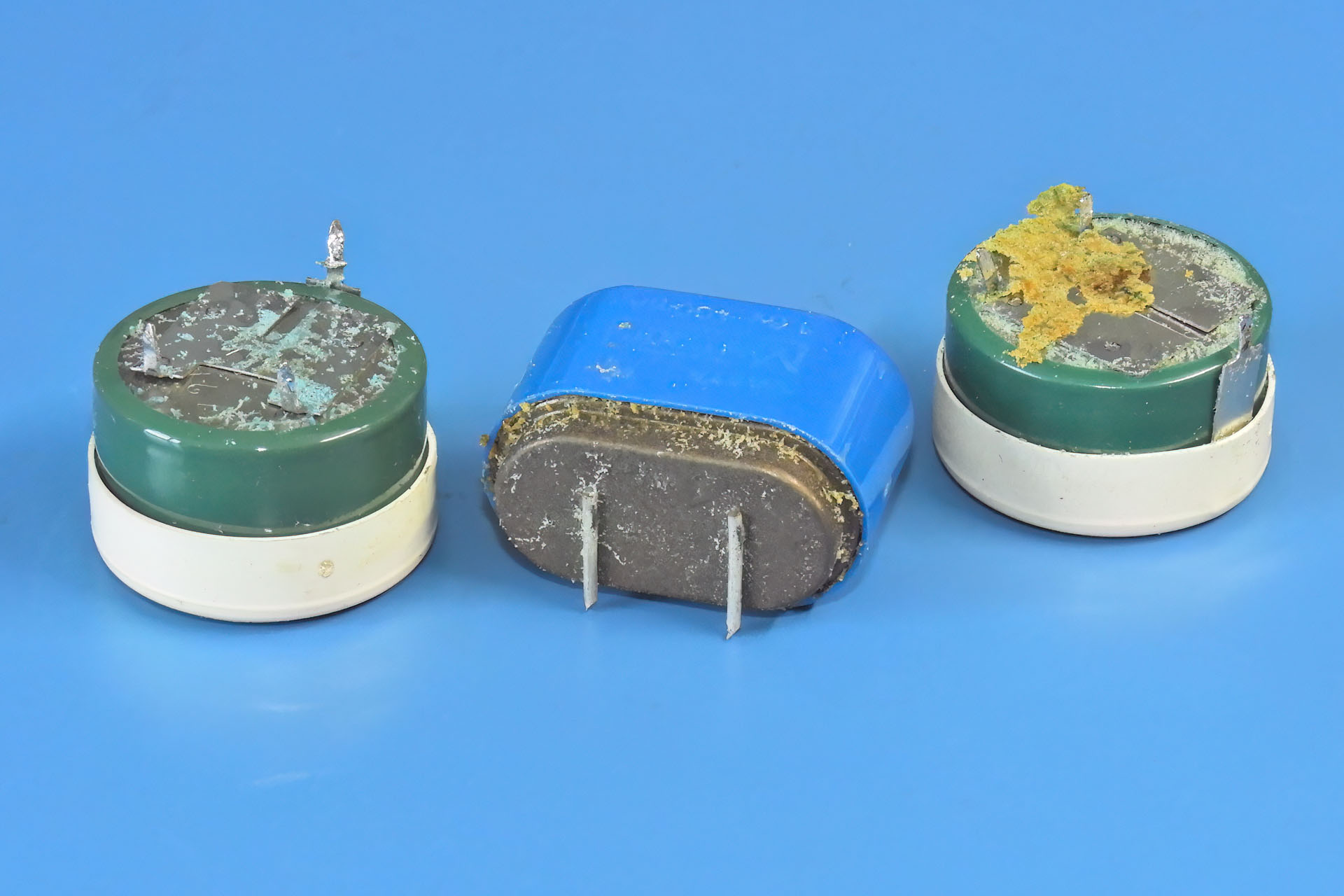
If you think they look bad, then you wouldn't want to see the insides of the machines that these all came out of! One of them had to be scrapped as it was totally unsalvageable.


